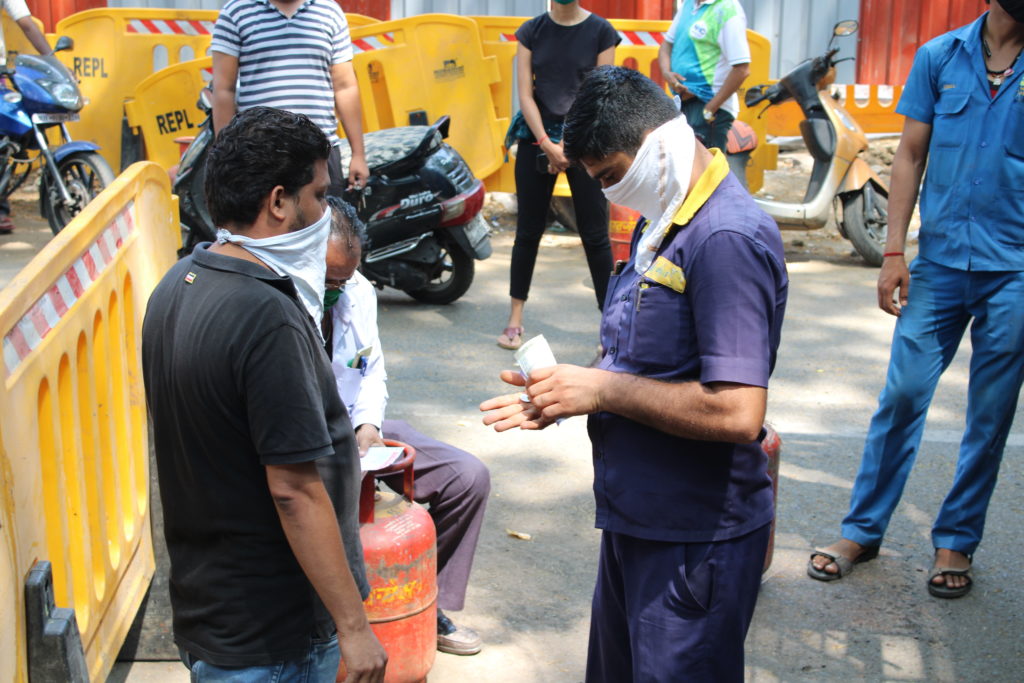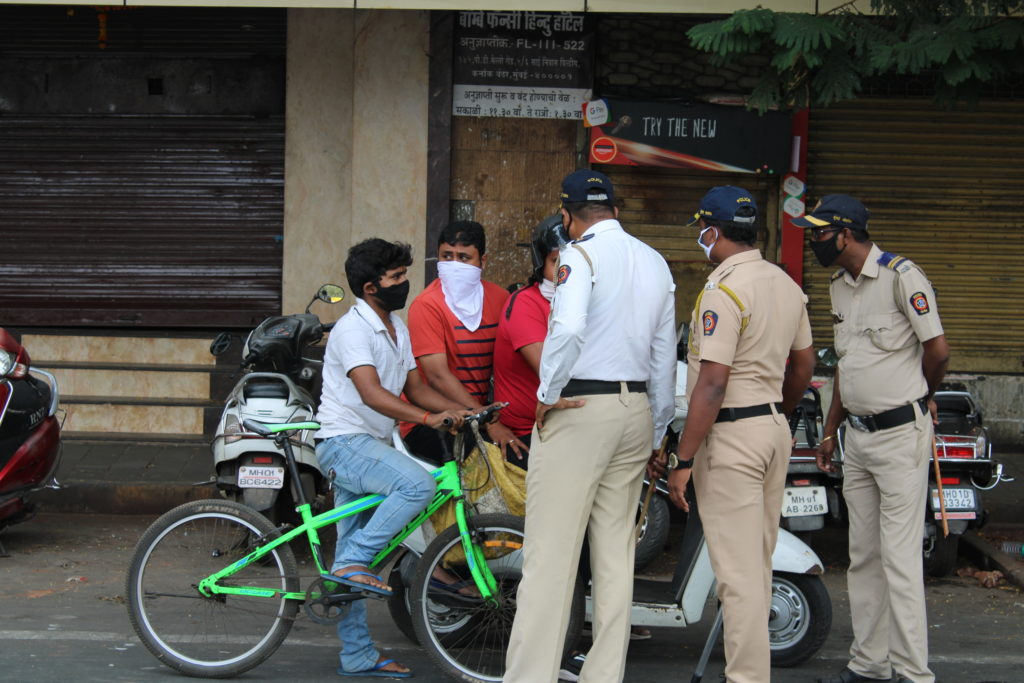Unmasking the mystery
Face masks have become ubiquitous following the outbreak of Covid-19 pandemic. Yet, there is a lack of clarity on who really needs to wear masks, what kind of masks are necessary and of course where to procure them in face of an immense shortage, in India and around the world.
Wearing masks in India has become a common feature for many leaving their homes during the coronavirus pandemic. Those queuing up at grocery or medical stores, those travelling in public or private transport or those simply strolling around their homes in order to break the boredom of being locked in, almost everyone seems to be sporting one. Yet, few know the reason for wearing a mask or even which masks are suitable for their protection.
The confusion has led to incidents where people not wearing masks are being attacked by self-appointed vigilantes, in the name of public health and security. Recently Harshit Harlalka, a 27-year-old analyst with Google, and his friend from Hyderabad were physically assaulted by three other customers for not wearing mask while they were out to buy groceries at a store in the city. “It was that one time that we had stepped out after the lockdown started. I have heard from several other people in Hyderabad who have faced same vigilantism. Multiple supermarkets in and around Hi-Tec city have put up notices saying “No Mask No Entry,””Harlalka told Media India Group.
WHO says what?
Not just in India, but indeed around the globe there is widespread confusion about the importance of wearing masks and who really needs them. While in India, for those still venturing out on the roads, police at check points do ask about the mask and there have been numerous incidents of the police using force or insisting on everyone wearing a mask. However, the World Health Organisation (WHO) guidelines recommend mask usage only to a selective few.
At a media briefing on March 30, the WHO recommended masks for those who were already infected with the COVID-19 virus in order to prevent spreading it to someone else. The WHO also added that people caring for the sick should wear masks to protect themselves and to prevent further transmission throughout a family unit.
Apart from these two sections, the people who should be wearing a mask are the people most at risk from this virus, that is, the frontline health workers who are exposed to the virus ‘every second of every day’, said the WHO.
However, the WHO guidelines seem to be too far and distant for police forces in India. For instance, at a checkpoint in Mumbai, the cops on duty acknowledged the WHO and its importance, but maintained they had to follow their rules. “We understand about the WHO guidelines but we are only doing what we have been asked to do,” says a police constable near one of the checkpoints in Colaba, in south Mumbai.
In Mumbai the police officials have been told to wear a mask as a defensive mechanism. Additional commissioner of police, south zone, Mumbai, Nishith Mishra while talking to Media India Group, says, “The police officials have been asked to wear masks for two reasons- one is to prevent them from falling ill due to their interactions with potentially ill persons. The other reason is to ensure an infected police official does not contaminate his fellow officials.”
In India, the Union Health Ministry and the office of the Principal Scientific Adviser (PSA), highest science advisory body, are giving contradictory statements on the matter. The health ministry has also replicated WHO’s guidelines. “Among those who are not healthcare workers, only those who had a cough or exhibited signs of a flu or a respiratory illness need to be wearing them as did those caring for COVID-19 patients,” says the ministry.
Whereas, the office of the PSA through the Press Information Bureau recommended the widespread use of masks and endorsed the usage of home-made masks that could easily be made and were reusable with washing and sanitising.
Raman Gangakhedkar, who was also at the briefing as a representative of the Indian Council of Medical Research (ICMR), said, “There’s a wide gap between the number of cases in the United States and India and the risk of exposure isn’t as much here. Hence only those sick or at risk of exposure should be wearing them.”
The fact that there has been no proper communication between the government and the public is therefore has led to mass confusion. “Lack of proper communication from state governments (and Central) and inability to check police, businesses who make up their own rules. There isn’t clear communication between government, health ministry and local police leaving much room to public interpretation (mostly by misinforming WhatsApp forwards) and unscientific news. When some MPs actively support news like cow urine cures COVID-19, there is little possibility of facts reaching the public. We’ve all seen news of police beating up the people on street who don’t wear masks, and hence public believes that to be the right thing to do,” says Harlalka.
A worrying situation for healthcare professionals
One of the biggest concerns of the WHO about shortage of masks has already come true in many countries including India, where the initial panic about Covid-19 led to practically everyone lining up at medical stores to get their hands on as many masks as they could and this led to a severe shortage and a sharp jump in the prices as shopkeepers made a killing on the unexpected demand.
Reports from several parts of the country highlight that not only is there a shortage but the prices of masks as well as sanitisers have shot up. An N95 mask that one could get at INR 150 is being sold at INR 500 now.
As a result, even today, there is a shortage and unavailability for doctors, nurses and other hospital staff. Most medical professionals in India are deeply concerned over shortages of protective health supplies, such as masks, gloves and coveralls, known as personal protective equipment (PPE).
“I still don’t have an N95 and I am seeing cough/fever/cold patients in my OPD every day,” says Surabhi Periwal, a doctor at SCB Medical College in Cuttack, Odisha.
“The masks have been all sold out. Till yesterday, all we were provided with were surgical masks which also have some protective action against droplet spread. As, people working in the hospital are dealing with such patients almost at all times, it’s important that they wear a mask. This is not only for COVID 19 but also a general guideline,” adds Periwal.
On March 24, Reuters reported that the government was planning to procure more PPE domestically and was also exploring imports from South Korea and China.However, the actions of the government in handling the situation since the very beginning has been visibly slow even though it could see other governments facing shortages. The WHO had issued warnings about impending global shortages of PPE on February 27. However, the Indian government called on industries to ramp up production only by 40 pc.
As per Qatari media group, Al Jazeera, the Indian Ministry of Textiles on March 18 noted that the Health Ministry would require more than 700,000 protective coveralls, six million N-95 masks and 10 million 3-ply masks until the end of May. However, as per the All India Drug Action Network, the need for coveralls, for instance, could rise to 500,000 per day. In the same meeting, the ministry also noted ‘‘there is a shortage of material and the rate of supply is not meeting the rising demand”.
Towards the end of January, the Ministry of Commerce and Industry issued a notification banning the export of all PPE. But,surprisingly, that order was amended a week later, on February 8, to allow the export of surgical masks and gloves. It was only on March 19 that the government banned the export of raw materials used to manufacture PPE.‘‘Indian manufacturers were urging the government to stock up materials since early February, and to impose anti-profiteering measures. Yet the by the time an order was received, the price of the components required to make ply masks had gone up from 250 per kg to 3,000 per kg,’’Sanjiiiv Relhan, the chairman of the Preventive Wear Manufacturer Association of India, told local media recently.
“The guidelines by the WHO are for countries that are testing in large numbers and have a fair idea about the number of cases that are present in their community. But, since in India, we do not have that assurance, anyone could be a case. Probably the need for masks arises from there,” says Periwal.

In Parel, central Mumbai, both the customer and the gas distributor seem to have a preference for handkerchieves over masks
Handkerchieves an alternative to masks?
Another common sight on Indian streets is people covering their face with kerchiefs. For some, including the police it seems that any cloth covering the mouth is good enough a protection. Recently, police personnel in Govandi in north-eastern Mumbai made a man take off his t-shirt and tie it around his face to cover his mouth.
“Handkerchieves are not going to keep the virus out. It’s almost useless! It can just keep the larger droplets out,” adds Dr Periwal.
However, for some like Harlalka handkerchieves do seem to be doing the trick. “We are using scarfs and handkerchieves when we go out, works well to fool people to not beat us,” he says.
“More than masks, hand hygiene is of utmost importance. Washing hands, use of sanitisers is definitely required as we are mostly unmindful of which surfaces our hands might touch and we might contract the disease due to fomite spread. Plus, needless to say people have a misplaced sense of security once they wear a mask. They practice less personal hygiene leading to failure in prevention of infection spread,” says Dr Periwal.










